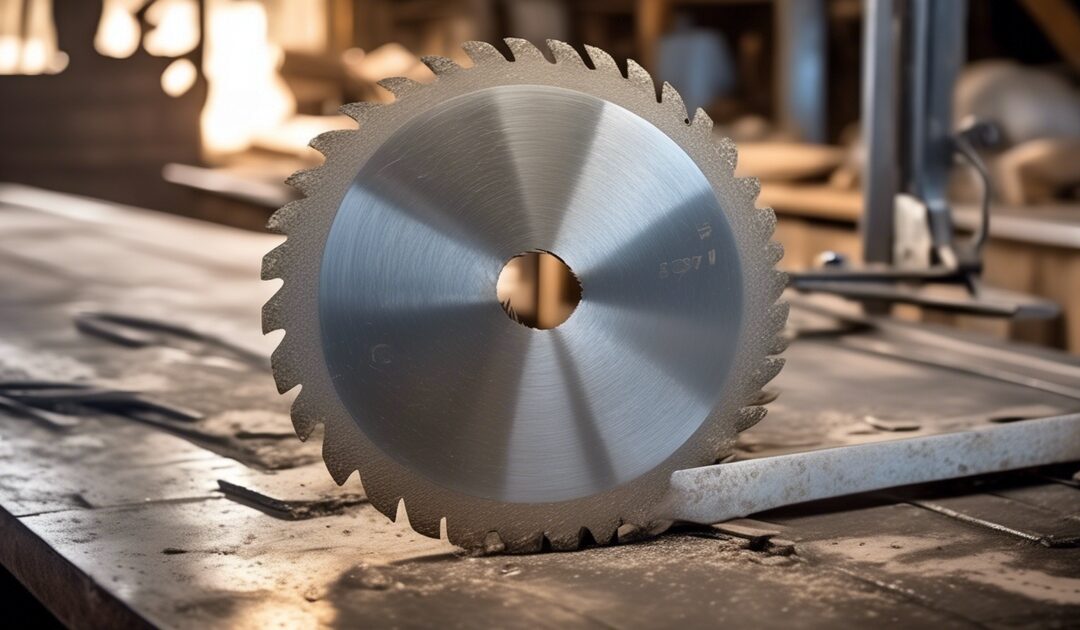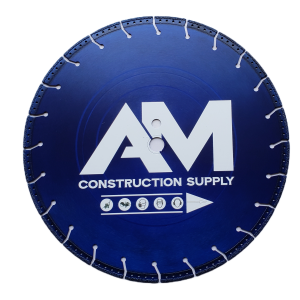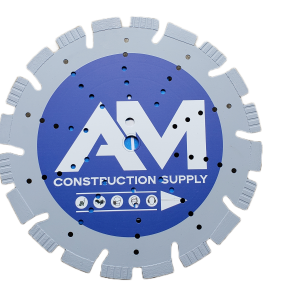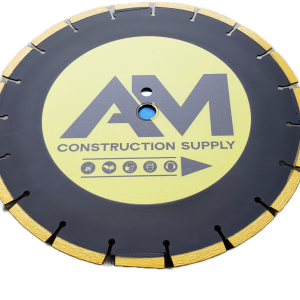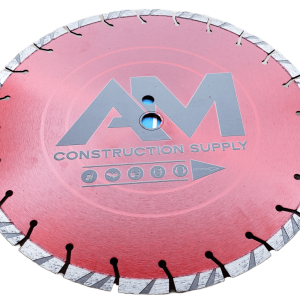Cutting through tough materials with a circular saw has always been a challenge in construction and masonry work. Historically, the evolution of tools has played a pivotal role in how efficiently these tasks can be accomplished. Enter the 20 inch masonry saw blade, a modern solution designed to tackle the most demanding cutting jobs with precision and ease. This powerful tool represents a significant leap forward from its predecessors, offering unparalleled durability and performance. Whether you’re slicing through bricks, blocks, or concrete, understanding the capabilities and features of this saw blade is crucial for anyone involved in construction or renovation projects. Let’s dive into what makes the 20 inch masonry saw blade a must-have for professionals and DIY enthusiasts alike.
Key Takeaways
- Understand Your Needs: Before purchasing a 20-inch masonry saw blade, assess the specific requirements of your project. Different tasks may necessitate distinct types of blades, as outlined in the “Understanding Diamond Blades” and “Types of Masonry Saws” sections.
- Choose Wisely: Opt for a 20-inch blade for its balance between size and precision, making it a versatile choice for various masonry tasks. The “Why Choose 20 Inch Blades” section highlights its suitability for both large and intricate cutting jobs.
- Quality Matters: Invest in a high-quality diamond blade to ensure efficiency and longevity. The “Advantages of Diamond Blades” part of the article underscores the superior performance of diamond blades over other types.
- Proper Blade Selection: Match the blade to both the saw and the material being cut. Guidance provided in the “Selecting the Right Blade” section can help avoid costly mistakes and ensure optimal cutting performance.
- Regular Maintenance: Follow the maintenance tips detailed in the article to prolong the life of your blade and maintain its cutting efficiency. This includes routine inspections and proper cleaning techniques.
- Safety First: Always adhere to safety guidelines when operating masonry saws. The “Safety Guidelines” section provides essential practices to prevent accidents and ensure a safe working environment.
Understanding Diamond Blades
Cutting Technology
Diamond-tooth blades stand out for their clean and efficient cuts in tough materials like asphalt. Their design allows for precise slicing with less effort. This leads to a smoother finish on the cut surface.
The right venting system plays a crucial role in blade performance. It helps reduce temperature and wear during intense cutting sessions. This ensures the blade lasts longer and performs better.
Advancements in blade technology now allow deeper cuts into asphalt with minimal stress on the cutting equipment. This means workers can tackle more demanding jobs without worrying about damaging their tools.
Blade Components
Firm-bonded diamond blades are essential for effective asphalt cutting. They ensure consistent performance under tough conditions. The firm bonding keeps the diamonds in place, allowing for repeated use without loss of efficiency.
Vents between each tooth play a critical role in maintaining an optimal blade temperature. They prevent overheating, which can cause damage to both the blade and the material being cut.
Blade components vary significantly when used for different materials. For asphalt, specific designs ensure longevity and effectiveness. In contrast, blades meant for concrete or granite might focus more on impact resistance than temperature control.
Durability Factors
The choice of blade greatly affects durability when cutting through asphalt. A well-chosen blade can withstand the rigors of heavy use without significant degradation.
Cutting depth and saw type also impact the longevity of masonry saw blades. Deeper cuts and heavier saws put more strain on blades, potentially reducing their lifespan unless they’re designed for such conditions.
Regular maintenance is vital to extend the life of asphalt cutting blades. Keeping them clean, checking for wear, and ensuring they’re properly mounted can make a significant difference in how long they last.
Types of Masonry Saws
Handheld Saws
For handheld cutting of masonry materials, a worm drive saw stands out due to its power. This type of saw is ideal for jobs requiring mobility and flexibility. However, users should be aware of its limitations.
Handheld saws struggle with deep cuts, particularly in asphalt. Their cutting depth is often insufficient for more demanding tasks. Efficiency also takes a hit when tackling asphalt, making these tools less suitable for extensive cutting jobs.
Safety is paramount when using handheld saws, especially for asphalt cutting. Users must wear appropriate protective gear and follow safety guidelines closely to avoid injuries.
Table Saws
Table saws may not be the first choice for deep asphalt cutting due to their limited cutting depth. However, they shine in smaller jobs where precision is key.
With the right blade, such as those discussed in “Understanding Diamond Blades,” table saws can adapt well to masonry materials. They offer precision benefits that are unmatched by other types of saws, making them perfect for specific tasks where accuracy matters most.
Despite their limitations in depth, table saws’ adaptability and precision make them valuable tools for certain masonry projects.
Walk-Behind Saws
For deeper cuts in asphalt that exceed 4 inches, walk-behind saws are the recommended choice. These machines are built for heavy-duty tasks and can handle large-scale or commercial projects with ease.
Walk-behind saws offer significant benefits in efficiency and safety for asphalt cutting. Their design allows for straighter and deeper cuts, improving project outcomes. Moreover, their built-in safety features minimize risks associated with large-scale cutting operations.
These saws excel in environments where precision and depth are critical, making them indispensable for serious masonry work.
Why Choose 20 Inch Blades
Deep Cuts
For projects needing cuts deeper than 4 inches into asphalt, walk-behind saws paired with a 20-inch masonry saw blade are essential. Achieving clean, deep cuts in asphalt presents challenges. These include maintaining blade stability and avoiding jagged edges. Technological advancements have improved these blades’ design. They now feature diamond segments for precision and durability. This innovation makes deeper asphalt cuts more feasible and efficient.
The process requires careful consideration of the blade’s specifications. Matching the right blade to the material ensures a cleaner cut. It reduces wear on both the blade and the saw.
Efficiency
Choosing the correct 20-inch blade and saw combination can significantly boost cutting efficiency in asphalt projects. One key to maintaining high efficiency is blade venting. This design feature helps reduce the temperature during cutting operations. Lower temperatures mean less downtime for cooling, leading to faster project completion.
Efficiency directly impacts overall project time and cost in asphalt cutting tasks. A well-chosen blade minimizes delays and reduces material waste. It ensures that cuts are precise from start to finish. The right tools save time and money, making them invaluable for large-scale construction or renovation projects.
Versatility
The versatility of firm-bonded diamond blades extends beyond just cutting through asphalt. These blades can handle various masonry materials, including concrete, brick, and block. The adaptability of different saw types—handheld, table, walk-behind—meets diverse asphalt cutting needs.
Advancements in blade technology have significantly increased these tools’ versatility. They now offer solutions tailored to specific materials and cutting conditions. Whether dealing with thick slabs or intricate patterns, there’s a 20-inch masonry saw blade designed for the task.
Selecting the Right Blade
Material Considerations
Selecting a 20 inch masonry saw blade involves understanding the unique characteristics of the material you intend to cut. Asphalt, for instance, demands specific blade types to ensure optimal performance. The right blade material composition is crucial when dealing with different asphalt types. This selection can significantly impact both the quality of the cut and the blade’s durability.
Blades not suited for asphalt may lead to uneven cuts or rapid wear, reducing their lifespan. It’s essential to consider the aggregate hardness, abrasiveness, and the asphalt’s composition before making a choice. Opting for a blade designed specifically for asphalt can prevent these issues, ensuring smooth operation and longer-lasting equipment.
Wet vs Dry Cutting
In asphalt cutting, choosing between wet and dry cutting techniques is vital depending on the job requirements. Wet cutting offers several advantages, such as dust suppression and extended blade life due to reduced friction and heat. However, it requires access to water and appropriate drainage measures to manage runoff.
Dry cutting, on the other hand, is more flexible and suitable for environments where water use is restricted or impractical. Despite its convenience, it might not always be the best choice due to increased dust production and potential for quicker blade degradation. Understanding when each method is appropriate is key to maximizing efficiency and maintaining safety standards on site.
Speed and Precision
Achieving high cutting speed without sacrificing precision is possible with the right combination of saw and 20-inch masonry saw blade. Factors like blade type and saw power play significant roles in determining both speed and accuracy. A well-matched pair allows for swift progress through materials without compromising on clean cuts or increasing material waste.
Precision is particularly important in projects requiring tight tolerances or intricate patterns in asphalt. It ensures that each cut contributes positively towards project goals while minimizing rework or adjustments due to inaccuracies. Investing in quality blades designed for high-speed operations can make a substantial difference in overall project efficiency.
Advantages of Diamond Blades
Longevity
Choosing the right 20 inch masonry saw blade, as highlighted in the selection process, significantly impacts its lifespan. Proper blade selection ensures that the blade matches the material it’s cutting, extending its life. Regular inspections and cleaning are crucial. They remove debris that can wear down the blade faster.
The way you cut also matters. A smooth, consistent technique prevents excessive wear on both the blade and the saw. This approach maximizes longevity, ensuring your investment lasts longer.
Cutting Speed
The type of blade and the power of the saw play key roles in determining cutting speed. For asphalt cutting blades, finding the balance between speed and quality is essential. Too fast may mean a rougher cut, while too slow can waste time and reduce efficiency.
Advancements in diamond blade technology have been game-changers. They allow for faster cutting speeds without sacrificing precision. This innovation means projects can move forward more quickly, saving time and money.
Minimal Downtime
Minimizing downtime is critical in any construction project. Selecting the right equipment and maintaining it properly cannot be overstated. It keeps projects on schedule by reducing delays caused by equipment failure.
Having backup blades and saws ready is a smart strategy to avoid project halts. It ensures that work continues smoothly even when issues arise with primary equipment.
Efficient cutting techniques not only improve job performance but also reduce wear on equipment. This leads to fewer interruptions and a more streamlined workflow.
Maintenance Tips
Cleaning Practices
To keep your 20 inch masonry saw blade running smoothly, regular cleaning is crucial. Dirt and debris can affect the blade’s efficiency and shorten its lifespan. For best results, remove asphalt residue after each use. This prevents buildup that can damage the blade over time.
Proper cleaning not only maintains the blade’s condition but also ensures safer operation. A clean blade cuts better, reducing the risk of accidents. Use a specialized cleaning solution designed for masonry blades to achieve optimal results.
Proper Storage
Storing your saw and blades correctly is vital for their longevity. Exposure to harsh conditions can lead to corrosion and wear. Thus, it’s important to store them in a dry, controlled environment.
For asphalt cutting equipment, particularly avoid damp areas. Moisture is a leading cause of rust and decay in metal components. By storing your tools properly, you save on costs by minimizing the need for replacements.
Regular Inspections
Regular inspections are key to maintaining your 20 inch masonry saw blade in top condition. Check for signs of wear, damage, or misalignment before each use. This ensures the blade is safe and ready for efficient cutting.
During these inspections, look closely at the blade edges for any irregularities or signs of dulling. Timely identification of these issues can prevent accidents and enhance cutting performance.
Safety Guidelines
Personal Protective Equipment
Proper personal protective equipment (PPE) is crucial for anyone using a 20 inch masonry saw blade to cut asphalt. Eye protection shields against flying debris, while ear protection reduces the risk of hearing damage from the high noise levels.
Respiratory protection is also essential. It prevents the inhalation of harmful dust produced during cutting. This dust can contain silica, which is dangerous when breathed in. Wearing the right PPE protects workers from these common hazards, ensuring their safety while on the job.
Operating Procedures
Following manufacturer-recommended operating procedures is vital for both safety and efficiency. These procedures are designed to minimize risks associated with using masonry saws and blades. Training plays a key role here. It helps operators understand how to cut asphalt safely and effectively.
Adhering to these guidelines not only prevents accidents but also avoids equipment damage. This ensures that projects progress smoothly without unexpected delays or costs.
Emergency Preparedness
Having an emergency plan is critical when working with powerful cutting tools like a 20 inch masonry saw blade. Accidents or equipment failure can happen unexpectedly, and being prepared minimizes their impact. An effective emergency preparedness plan includes first aid measures and equipment troubleshooting steps.
This preparation ensures that everyone knows what to do in case of an incident, keeping project timelines on track and enhancing overall safety.
Case Studies
Success Stories
Contractors often face challenges when cutting through tough materials like asphalt. However, with the right tools, these tasks can become manageable and efficient. One notable example involves a road construction project in Texas. The team used a 20-inch masonry saw blade designed for high performance and durability. This choice proved pivotal.
The blade’s design allowed for fast, precise cuts, significantly reducing labor time. Workers reported that it sliced through asphalt as if it were butter, maintaining sharpness throughout the project. This efficiency led to the project finishing two weeks ahead of schedule. Moreover, the enhanced safety features of the saw blade minimized risks, echoing the importance of adhering to safety guidelines discussed earlier.
These successes demonstrate how selecting appropriate equipment can elevate work quality and safety standards. Such stories serve as benchmarks for future projects, emphasizing efficiency, precision, and safety.
Comparative Analysis
Choosing the right combination of blade and saw is crucial for optimal performance in asphalt cutting. A comparative study between various blades revealed significant differences in their effectiveness.
One comparison involved a traditional diamond-tipped blade versus the 20-inch masonry saw blade. While both could cut through asphalt, the latter showed superior results in terms of speed and wear resistance. Users noted that while diamond blades require frequent replacement, the 20-inch masonry saw blade maintained its integrity over longer periods.
However, it’s not all about durability and speed. The study highlighted several factors to consider:
- Cutting precision: The 20-inch blade offered more accurate cuts.
- Safety: Enhanced safety features reduced work-related injuries.
- Cost-effectiveness: Despite a higher initial cost, the long-term savings on replacements made it more economical.
This analysis underlines the importance of evaluating both pros and cons when selecting equipment for specific needs. It also suggests that investing in high-quality tools can lead to better outcomes in terms of both performance and safety.
Purchasing Guide
Quality Indicators
The durability and effectiveness of a 20-inch masonry saw blade largely depend on its material composition and design features. High-quality blades often incorporate diamond or other hard materials that ensure longevity and clean cuts. The design, such as segmented edges or continuous rims, plays a critical role in the blade’s performance on asphalt.
Choosing equipment from reputable manufacturers is crucial. These companies have a track record of reliability and performance, offering products that consistently meet high standards. Investing in quality tools not only leads to better project outcomes but also reduces long-term costs associated with replacements and repairs.
Warranty and Support
When selecting asphalt cutting equipment, warranty options and manufacturer support are significant considerations. Products backed by strong warranties demonstrate the manufacturer’s confidence in their durability and performance. Accessible customer support for troubleshooting and advice can be invaluable, especially in complex projects.
Benefits of choosing products with comprehensive warranties include peace of mind and potential savings on future repairs or replacements. Manufacturer support can also guide you through the selection process, ensuring you find the best tool for your needs based on real-world applications discussed in case studies.
Price Considerations
Balancing cost and quality is essential when purchasing blades and saws for asphalt cutting. While higher-quality equipment often comes with higher upfront costs, these investments can lead to significant long-term savings. Durable, efficient tools reduce the need for frequent replacements and increase work efficiency.
Selecting the right equipment involves evaluating both price and performance to optimize project budgets and outcomes. Considering how these tools contribute to project success can justify the initial investment, making it a strategic financial decision rather than merely an expense.
Closing Thoughts
Choosing the right 20-inch masonry saw blade is crucial for your construction or renovation projects. We’ve walked you through everything from understanding diamond blades to maintenance tips and safety guidelines. You now know the advantages of diamond blades and how to select the perfect one for your needs. Remember, a well-chosen blade not only boosts efficiency but also ensures safety and longevity.
Don’t let the plethora of options overwhelm you. Use this guide as your go-to reference whenever you’re in doubt. With the right 20-inch masonry saw blade, your projects will move smoother and faster, saving you time and money. Ready to make that purchase? Dive into our purchasing guide one more time, and make an informed decision that will elevate your work. Your next masterpiece awaits.
Frequently Asked Questions
What is a 20 inch masonry saw blade used for?
A 20 inch masonry saw blade is designed for cutting through large, dense materials like stone, brick, and concrete efficiently, offering precise cuts over extended areas.
Why choose a diamond blade for masonry work?
Diamond blades provide unmatched durability and cutting speed on hard materials. They reduce work time and increase precision, making them ideal for professional masonry tasks.
How do I select the right 20 inch blade for my project?
Consider the material you’ll be cutting and the type of cut you need. For general use, segmented diamond blades offer versatility, while turbo blades give smoother cuts in specific materials.
What are the advantages of using diamond blades in construction?
Diamond blades deliver clean cuts, have a longer lifespan than traditional blades, and can handle tougher materials. This efficiency saves time and reduces the need for multiple blade changes.
Can you provide maintenance tips for a 20 inch masonry saw blade?
Regularly check for wear or damage, ensure it’s correctly mounted on the saw, and use it at the recommended speed. Clean it after use to remove debris and prevent buildup.
What safety guidelines should I follow when using a masonry saw blade?
Always wear protective gear including goggles and gloves. Ensure the work area is secure and free from obstructions. Follow manufacturer instructions for operation and handling to prevent accidents.
Where can I purchase a quality 20 inch masonry saw blade?
Look for reputable suppliers specializing in construction tools. Online marketplaces also offer a wide selection with reviews to help guide your decision based on quality and performance feedback.

